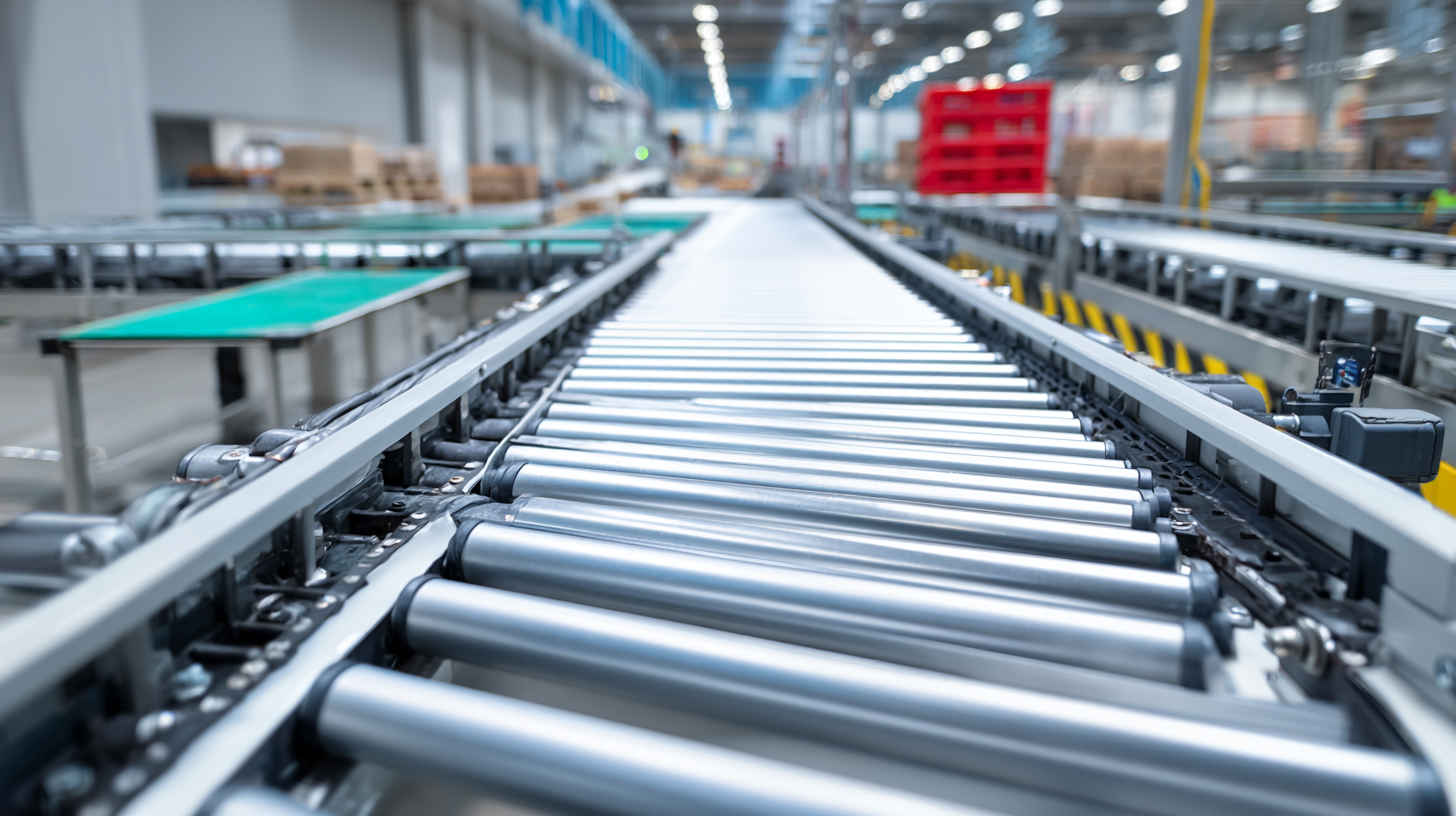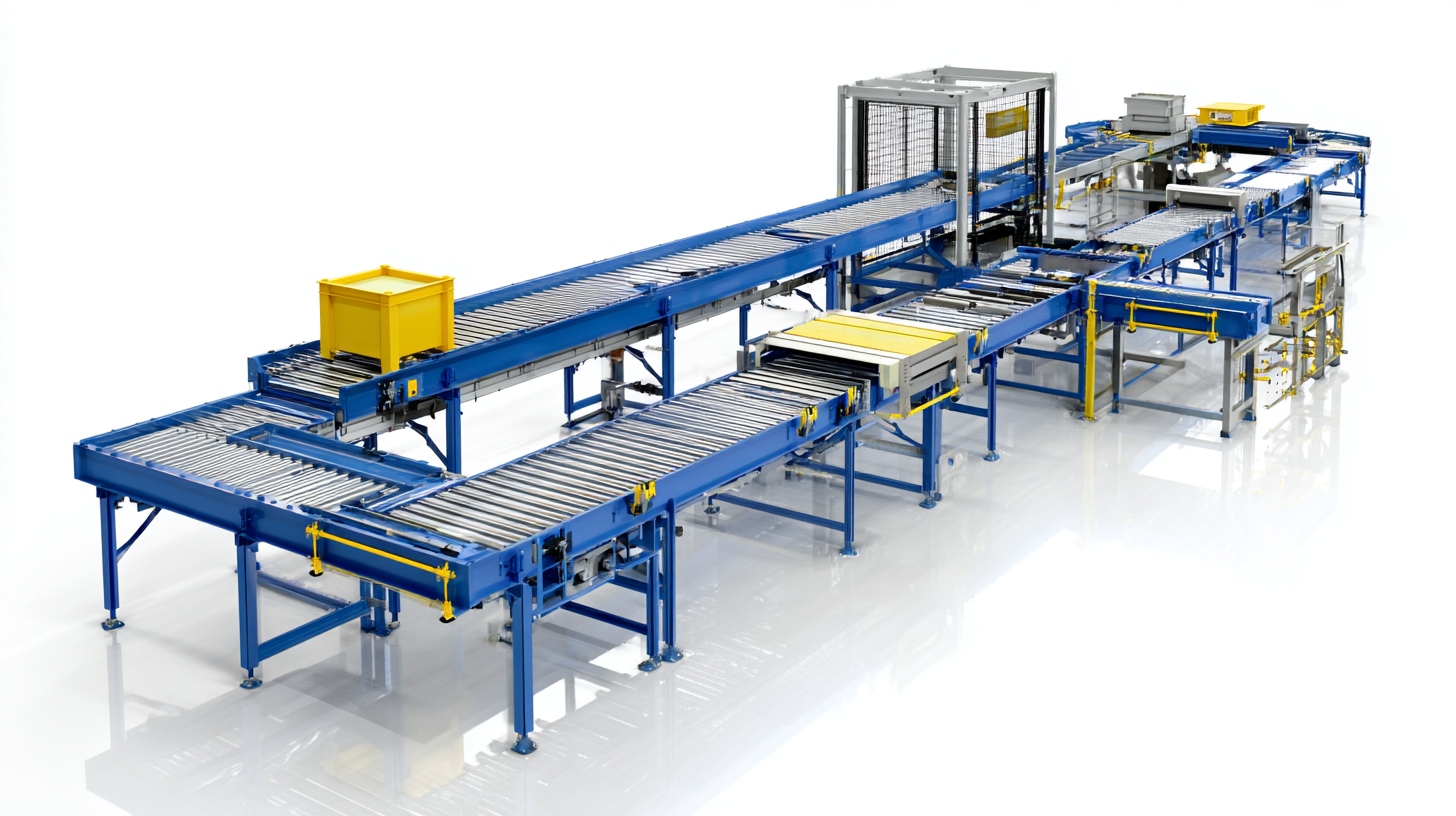The importance of efficient materials handling in various industries cannot be overstated, and at the heart of this optimization lies Conveyor Systems Limited. According to a report by MarketsandMarkets, the global conveyor systems market is projected to reach $9.2 billion by 2025, growing at a CAGR of 4.9% from 2020. With the increasing demand for automation and operational efficiency across sectors such as manufacturing, logistics, and retail, sourcing the best conveyor systems is crucial for businesses looking to enhance productivity. However, navigating the complexities of conveyor system providers can be daunting. This ultimate guide presents seven essential tips that will empower you to select the finest conveyor systems limited worldwide, ensuring that your operational needs are met while maximizing return on investment.

Conveyor systems are critical components in various industries, ensuring efficient material handling and streamlined operations. Understanding the different types of conveyor systems available can help businesses make informed decisions that optimize productivity. For instance,
belt conveyors, which account for approximately 40% of the market share as per the latest reports from Grand View Research, are widely used in manufacturing and distribution for transporting bulk materials over fixed paths. Their versatility makes them suitable for industries ranging from food processing to pharmaceuticals.
Another common type is the roller conveyor, which is particularly effective in logistics and warehousing environments. According to a report by Research and Markets, the global roller conveyor market is projected to grow significantly due to the increasing automated material handling systems. These conveyors facilitate easy load handling, especially in environments where items need to be sorted or moved along an assembly line.
Additionally, modular conveyor systems have gained traction in sectors that require flexibility and customization, showcasing the ongoing trend towards adaptable solutions in industrial applications. Understanding these systems' unique advantages can greatly enhance operational efficiency and meet specific industry needs.

When sourcing conveyor systems for your business, several key factors can significantly influence your decision. First and foremost, you need to assess the specific needs of your operation. Consider the types of materials you'll be handling and the workflow of your facility. This understanding will guide you in selecting the right conveyor type, whether it's belt, roller, or modular. Make sure to factor in the system's load capacity and speed requirements to ensure optimal functionality.
Another crucial aspect to consider is the reputation and reliability of the suppliers. Conduct thorough research into potential vendors, looking for those with a proven track record in providing high-quality conveyor systems. Check customer reviews, and ask for references to gauge their level of service and support. Additionally, inquire about warranties and after-sales service, as these elements can play a significant role in minimizing downtime and maintaining your system's efficiency over time. By carefully evaluating these factors, you can make an informed decision that will ultimately enhance your operational efficiency.
In the ever-evolving landscape of industrial automation, real-world implementations of conveyor systems serve as invaluable case studies for companies aiming to enhance their operational efficiency. One notable example is a leading automotive manufacturer that implemented a state-of-the-art conveyor system to streamline its assembly line process. By integrating a modular belt conveyor, the company reduced product handling times by 20%, enabling faster production cycles and allowing for increased output without additional labor costs. This transformation not only improved productivity but also enhanced the overall workplace safety by minimizing manual lifting and handling tasks.

Another compelling case involved a food processing plant that faced challenges with inconsistent product flow during peak hours. By opting for a custom-designed conveyor system equipped with sensors and automated controls, the facility was able to optimize its operations significantly. The new system facilitated real-time monitoring of product movement, which minimized delays and bottlenecks. As a result, the plant reported a 30% increase in throughput and a remarkable reduction in waste, demonstrating how tailored conveyor solutions can lead to transformative results in various industries. These examples highlight the importance of strategic sourcing in finding the best conveyor systems to meet unique operational needs.
When sourcing conveyor systems worldwide, the credibility of your supplier is paramount. To ensure that you choose the right conveyor manufacturer, start by conducting thorough research into their background and history. Look for established companies with a proven track record in the industry. Customer testimonials and case studies can provide valuable insights into their capabilities and reliability. Engaging with past clients can also give you a more personal view of their experiences, helping you gauge the supplier's ability to meet your specific needs.
Another critical factor in evaluating supplier credibility is their certification and compliance with industry standards. Check if the manufacturer adheres to international quality standards such as ISO certifications or specific safety regulations pertinent to your sector. A reputable supplier will not only have these certifications readily available but will also be forthcoming about their manufacturing processes and quality control measures. By focusing on these elements, you can ensure that you are selecting a conveyor manufacturer that will provide reliable, efficient systems tailored to your operational requirements.
| Criteria | Description | Importance Level |
|---|---|---|
| Supplier Experience | Number of years in the conveyor manufacturing industry. | High |
| Product Quality | Standards and certifications met by the conveyor systems. | Critical |
| Customer Reviews | Feedback and ratings from previous clients. | Moderate |
| After-Sales Support | Availability of maintenance and support services. | High |
| Customization Options | Ability to modify conveyor systems based on specific needs. | Moderate |
| Pricing Transparency | Clear and detailed pricing structures without hidden fees. | High |
| Geographic Reach | Ability to deliver and service conveyor systems globally. | Low |
The conveyor systems industry is experiencing remarkable innovation, shaping how industries operate and enhancing overall efficiency. With the advent of smart technology, modern conveyor systems are now integrated with IoT capabilities, allowing real-time monitoring and data analytics. This not only streamlines operations but also minimizes downtime by predicting maintenance needs before they become critical. Companies can adjust their production processes dynamically, responding swiftly to market demands while optimizing resource usage.
Another groundbreaking trend is the use of advanced materials in conveyor design. Lightweight yet durable materials contribute to energy-efficient systems, reducing the carbon footprint of operations. Additionally, modular designs are gaining popularity, providing flexibility in scaling systems according to specific business needs. These innovations are revolutionizing traditional practices, allowing organizations to implement more agile and responsive supply chains. As industries continue to adapt to these cutting-edge technologies, the benefits in productivity and cost savings become increasingly evident.
